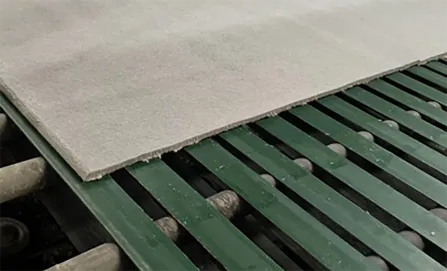Dec . 03, 2024 19:53 Back to list
suspended ceiling tile grid
Understanding Suspended Ceiling Tile Grids
Suspended ceiling tile grids, widely recognized in the construction and design industries, play a pivotal role in modern architectural aesthetics as well as functionality. These grids provide not only structural support for ceiling tiles but also enhance the overall utility and comfort of interior spaces. This article explores the essence of suspended ceiling tile grids, their components, installation processes, and benefits they offer.
What is a Suspended Ceiling Tile Grid?
A suspended ceiling tile grid system consists of a framework that is suspended from the structural ceiling of a building. This framework is typically made of lightweight materials such as metal or vinyl, designed to hold various types of ceiling tiles in place. The system creates a space between the existing ceiling and the new suspended ceiling, allowing for the concealment of electrical wiring, plumbing, and insulation, thus providing a clean and polished appearance.
Components of a Suspended Ceiling Grid System
1. Main Tee These are the primary support beams that run in one direction across the ceiling. They are usually spaced four feet apart. 2. Cross Tee These components connect with the main tees to form a grid. They are typically shorter, with lengths of two feet or four feet, and allow for the placement of ceiling tiles in a consistent pattern. 3. Wall Angle This is an L-shaped channel that attaches to the walls and provides support for the edges of the grid. It is crucial for maintaining the structure’s alignment and ensuring the ceiling sits evenly. 4. Tiles Ceiling tiles come in various materials such as mineral fiber, metal, and gypsum. Each type offers different aesthetic and acoustic properties, catering to diverse design needs.
Installation Process
Installing a suspended ceiling tile grid is a manageable task, often used in both commercial and residential settings. The process generally includes the following steps
suspended ceiling tile grid

1. Planning Measure the room dimensions and decide on the desired height for the suspended ceiling. It's important to consider any objects (like light fixtures) that will extend from the ceiling. 2. Installation of Wall Angles Attach the wall angles around the perimeter of the room, ensuring they are level. This will define the height of the grid system. 3. Main Tee Placement Install the main tees at specified intervals, usually every four feet, ensuring they are level. 4. Cross Tee Installation Insert cross tees between the main tees to complete the grid layout. 5. Ceiling Tile Installation Finally, place the ceiling tiles into the grid slots. Tiles can be easily removed and replaced, facilitating access to the space above the ceiling.
Benefits of Suspended Ceiling Tile Grids
1. Aesthetic Appeal Suspended ceilings can significantly enhance the visual appeal of a room. Designers can select tiles with various textures, colors, and patterns, allowing for extensive customization. 2. Acoustic Benefits Many ceiling tiles are designed to absorb sound, making them ideal for spaces that require noise control, such as offices, restaurants, and schools. 3. Easy Access The space between the original ceiling and the suspended ceiling allows for easy access to utilities, which is particularly beneficial for maintenance and repairs.
4. Energy Efficiency Suspended ceilings can improve a room's energy efficiency. The air gap can help in insulation and temperature control, which may lead to reduced energy costs.
5. Code Compliance In many jurisdictions, building codes mandate certain fire safety regulations. Suspended ceiling systems can be designed to meet these local codes, ensuring safety in commercial buildings.
Conclusion
Suspended ceiling tile grids are an integral part of modern construction and design, combining practicality with aesthetic value. Their diverse applications, from enhancing acoustics to facilitating maintenance, make them a popular choice across various industries. Understanding the components, installation process, and advantages of these systems can help homeowners, builders, and designers make informed decisions that enhance the functionality and style of any space. As architectural needs continue to evolve, suspended ceiling tile grids will undoubtedly remain a fundamental aspect of interior design.
-
Quality Ceiling Trap Doors & Access Panels | Easy & Secure AccessNewsAug.30,2025
-
Durable Ceiling T Grid Systems | Easy InstallationNewsAug.29,2025
-
PVC Gypsum Ceiling: Durable, Laminated Tiles for Modern SpacesNewsAug.28,2025
-
Pvc Gypsum Ceiling Is DurableNewsAug.21,2025
-
Mineral Fiber Board Is DurableNewsAug.21,2025
-
Ceiling Tile Clip Reusable DesignNewsAug.21,2025







